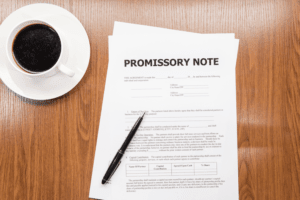Stockholder’s Equity Statement Definition, Examples, Format

The statement of shareholders’ equity is also known as the statement of stockholders’ equity or the statement of equity. Retained earnings, as the name implies, reflect the gains and losses carried forward to the next financial year. It is the amount left with or kept aside by the company after it pays the dividend from net income.
Why is it important for a company to have enough stockholders’ equity?
Business.com aims to help business owners make informed decisions to support and grow their companies. We research and recommend products and services suitable for various business types, investing thousands of hours each year in this process. During a liquidation process, the value of physical assets is reduced and there are other extraordinary conditions that make the two numbers incompatible.
How confident are you in your long term financial plan?

The amount of paid-in capital that a company has is directly related to the total stockholders’ equity that it displays. Small business owners need to know how their company is doing throughout time, in both prosperous and difficult times. “Here are three reasons why a Statement Of Shareholder Equity is a valuable tool for gauging the health of a business,” says Steinhoff. In other words, in fiscal year 2019, there were no significant issues of new common stock. The Shareholders’ Equity Statement holds paramount significance, serving as a crucial financial statement for various stakeholders including the company, shareholders, and potential investors.
Common Stock and APIC Calculation Example
- All these transactions reflect on equity and play a crucial role in reshaping it over time.
- Through this essential financial document, corporations uphold an important facet of good governance—transparency.
- From a shareholder’s point of view, the Shareholders’ Equity Statement ensures transparency – a significant component that bolsters trust and confidence in the management.
- Because the number of shares is reduced in buybacks, shareholders’ equity generally declines.
- Thus, shareholder equity is equal to a company’s total assets minus its total liabilities.
- Note that near the bottom of the SCF there is a reconciliation of the cash and cash equivalents between the beginning and the end of the year.
- In 2021, the share repurchases are assumed to be $5,000, which will be subtracted from the beginning balance.
In short, the asset value can be calculated by adding the firm’s equity and total debt or liabilities. The following examples feature the shareholders’ equity statement and show how to calculate shareholders’ equity with respect to all the above-mentioned components. So, for example, if A has a 20 percent contribution and B has a 40 percent contribution, the latter’s share would be more than the former when the company liquidates or makes significant profits. While this figure does include money that could be returned to the owners of the company, it also includes items like depreciation and amortization, which cannot be directly distributed to shareholders. This is often done by either borrowing money or issuing shares of stock, both of which can result in additional obligations.

Dividends
Treasury shares continue to count as issued shares, but they are not considered to be outstanding and are thus not included in dividends or the calculation of earnings per share (EPS). Treasury shares can always be reissued back to stockholders for purchase when companies need to raise more capital. If a company doesn’t wish to hang on to the shares for future financing, it can choose to retire the shares.
- Companies may return a portion of stockholders’ equity back to stockholders when unable to adequately allocate equity capital in ways that produce desired profits.
- Shares bought back by companies become treasury shares, and their dollar value is noted in the treasury stock contra account.
- If we rearrange the balance sheet equation, we’re left with the shareholders’ equity formula.
- But if it’s negative, that means its debt and debt-like obligations outnumber its assets.
- These are not yet distributed to the stockholders and retained by the company for investing in the business.
- It can also help you find and attract investors ― who will undoubtedly want to see that statement before injecting capital into your organization.
- Overall, this article provides readers with a detailed definition of stockholders’ equity along with the most common misconceptions about the value.
Types of Stockholders’ Equity

Both U.S. GAAP and IFRS require companies to include a document that outlines the changes in all equity accounts for greater investor transparency. The shareholders equity ratio, or “equity ratio”, is a method to ensure the amount of leverage used to fund the operations of a company is reasonable. Next, the “Retained Earnings” are the accumulated net profits (i.e. the “bottom line”) that the company holds onto as opposed to paying dividends to shareholders. Shareholders’ equity is the residual claims on the company’s assets belonging to the company’s owners once all liabilities have been paid down. An asset is what a company owns and from which the liabilities are subtracted to obtain its equity value.
In theory, Shareholders’ Equity can be used to evaluate the cash held by a company. If this value is negative, it may signal that the company is statement of shareholders equity example about to file for bankruptcy, especially if it has a substantial debt liability. However, examining these changes on a quarterly basis might give more immediate insights into the company’s performance and any recent events impacting its equity.

AccountingTools
If the same assumptions are applied for the next year, the end-of-period shareholders equity balance in 2022 comes out to $700,000. From the beginning balance, we’ll add the net income of $40,000 for the current period, and then subtract the $2,500 in dividends distributed to common shareholders. Now that we’ve gone over the most frequent line items in the shareholders’ equity section on a balance sheet, we’ll create an example forecast model. https://x.com/BooksTimeInc After the repurchase of the shares, ownership of the company’s equity returns to the issuer, which reduces the total outstanding share count (and net dilution).
Get Weekly 5-Minute Business Advice
For example, if accounts receivable decreased by $5,000, the corporation https://www.bookstime.com/ must have collected more than the current period’s credit sales that were included in the income statement. Since the decrease in the balance of accounts receivable is favorable for the corporation’s cash balance, the $5,000 decrease in receivables will be a positive amount on the SCF. The statement of stockholder’s equity displays all equity accounts that affect the ending equity balance including common stock, net income, paid in capital, and dividends.






